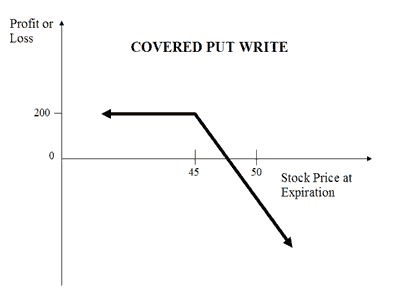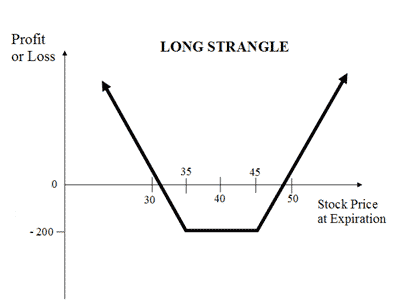 Zerodha (Trading Account)
Zerodha (Trading Account)
FREE Equity Delivery and MF
Flat ₹20/trade Intra-day/F&O
 Zerodha (Trading Account)
Zerodha (Trading Account)
FREE Equity Delivery and MF
Flat ₹20/trade Intra-day/F&O

|
|
Compare Covered Put (Married Put) and Long Strangle (Buy Strangle) options trading strategies. Find similarities and differences between Covered Put (Married Put) and Long Strangle (Buy Strangle) strategies. Find the best options trading strategy for your trading needs.
| Covered Put (Married Put) | Long Strangle (Buy Strangle) | |
|---|---|---|
 |
 |
|
| About Strategy | The Covered Put is a neutral to bearish market view and expects the price of the underlying to remain range bound or go down. In this strategy, while shorting shares (or futures), you also sell a Put Option (ATM or slight OTM) to cover for any unexpected rise in the price of the shares. This strategy is also known as Married Put strategy or writing covered put strategy. The risk is unlimited while the reward is limited in this strategy. How to use a Protective Call trading strategy? The usual Covered Put looks like as below for State Bank of India (SBI) Shares which are currently traded at Rs 275 (SBI Spot Price): Covered Put Orders - SBI Stock OrdersSBI Strike Price Sell Underlying SharesSell 100 SBI Shares ... Read More | The Long Strangle (or Buy Strangle or Option Strangle) is a neutral strategy wherein Slightly OTM Put Options and Slightly OTM Call are bought simultaneously with same underlying asset and expiry date. This strategy can be used when the trader expects that the underlying stock will experience significant volatility in the near term. It is a limited risk and unlimited reward strategy. The maximum loss is the net premium paid while maximum profit is achieved when the underlying moves either significantly upwards or downwards at expiration. The usual Long Strangle Strategy looks like as below for NIFTY current index value at 10400 (NIFTY Spot Price): Options Strangle Orders OrdersNIFTY Strike Price Buy 1 Slightly OTM PutN... Read More |
| Market View | Bearish | Neutral |
| Strategy Level | Advance | Beginners |
| Options Type | Put + Underlying | Call + Put |
| Number of Positions | 2 | 2 |
| Risk Profile | Unlimited | Limited |
| Reward Profile | Limited | Unlimited |
| Breakeven Point | Futures Price + Premium Received | two break-even points |
| Covered Put (Married Put) | Long Strangle (Buy Strangle) | |
|---|---|---|
| When to use? | The Covered Put works well when the market is moderately Bearish |
A Long Strangle is meant for special scenarios where you foresee a lot of volatility in the market due to election results, budget, policy change, annual result announcements etc. |
| Market View | Bearish When you are expecting a moderate drop in the price and volatility of the underlying. |
Neutral When you are unsure of the direction of the underlying but expecting high volatility in it. |
| Action | Sell Underlying Sell OTM Put Option Suppose SBI is trading at 300. You believe that the price will remain range bound or mildly drop. The covered put allows you to benefit from this market view. In this strategy, you sell the underlying and also sell a Put Option of the underlying and receive the premium. You will benefit from drop in prices of SBI, the Put Option will minimize your risks. If there is no change in price then you keep the premium received as profit. |
Suppose Nifty is currently at 10400 and you expect the price to move sharply but are unsure about the direction. In such a scenario, you can execute long strangle strategy by buying Nifty at 10600 and at 10800. The net premium paid will be your maximum loss while the profit will depend on how high or low the index moves. |
| Breakeven Point | Futures Price + Premium Received The break-even point is achieved when the price of the underlying is equal to the total of the sale price of underlying and premium received. |
two break-even points A Options Strangle strategy has two break-even points. Lower Breakeven Point = Strike Price of Put - Net Premium Upper Breakeven Point = Strike Price of Call + Net Premium |
| Covered Put (Married Put) | Long Strangle (Buy Strangle) | |
|---|---|---|
| Risks | Unlimited The Maximum Loss is Unlimited as the price of the underlying can theoretically go up to any extent. Loss = Price of Underlying - Sale Price of Underlying - Premium Received |
Limited Max Loss = Net Premium Paid The maximum loss is limited to the net premium paid in the long strangle strategy. It occurs when the price of the underlying is trading between the strike price of Options. |
| Rewards | Limited The maximum profit is limited to the premiums received. The profit happens when the price of the underlying moves above strike price of Short Put. |
Unlimited Maximum profit is achieved when the underlying moves significantly up and down at expiration. Profit = Price of Underlying - Strike Price of Long Call - Net Premium Paid Or Profit = Strike Price of Long Put - Price of Underlying - Net Premium Paid |
| Maximum Profit Scenario | Underlying goes down and Options exercised |
One Option exercised |
| Maximum Loss Scenario | Underlying goes up and Options exercised |
Both Option not exercised |
| Covered Put (Married Put) | Long Strangle (Buy Strangle) | |
|---|---|---|
| Advantages | Its an income generation strategy in a neutral or Bearish market. Also allows you to benefit from fall in prices, range bound movements or mild increase. |
|
| Disadvantage | The risks can be huge if the prices increases steeply. |
The strategy requires significant price movements in the underlying to gain profits. |
| Simillar Strategies | Bear Put Spread, Bear Call Spread | Long Straddle, Short Strangle |

Add a public comment...

FREE Intraday Trading (Eq, F&O)
Flat ₹20 Per Trade in F&O
|
|